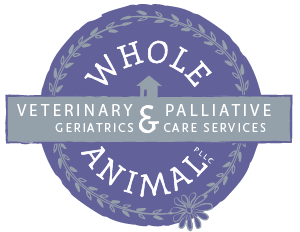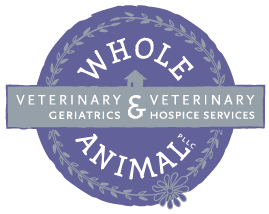Sheltering & veterinary hospice? Dr. Goldberg speaks to SPCA volunteers on May 17, 2012
Tonight at a presentation for SPCA volunteers, I was asked what my vision is for sheltering, and what my vision is for veterinary hospice care. I was both impressed and surprised by the question & a bit surprised by my answer as well – not because I was unsure of how I felt about these two, seemingly unrelated topics, but because of how very much related they actually are.
My response to “what is your vision for sheltering” was something that I have given a great deal of thought, over a period of approximately 10 years, and I’m happy to share it here with you:
My vision for sheltering is for the terrible politics of “no-kill” to ultimately be addressed in a way that enables people to reach common ground, and put the welfare of animals first. My vision is for animal advocates & humane educators to realize that “no-kill” is a public relations disaster that divides people who are trying to work on behalf of animals, that “no-kill” is ultimately bad for animal welfare. This is an unpopular opinion, and possibly an unexpected vision, I realize, especially in a community that has been a crown jewel of “no-kill” for some time now. However, as the saying goes, Ithaca really is “10 square miles surrounded by reality”. Animal sheltering is no exception. We know that keeping animals out of the shelter – through foster programs, for example – is important for keeping animals adoptable by preventing undesirable behaviors. We are pretty good at this. Other communities are far less so.
In communities that have the “limited admission” shelter (i.e., “no-kill”), and the additional, necessary, “open admission” shelter (i.e., the city “pound”), the “no-kill” option may get the public support, while the “pound” gets the extra, less adoptable animals. What should be done with them? We know that the toll of confinement can be considerable, especially for dogs. Questions arise: how long are we going to keep animals in confinement, becoming less & less adoptable? Well, that depends on the type of shelter the animal is in. How long do we keep animals in “open-admission” situations when there is a constant pressure for space? How long do we keep animals under the auspices of “no-kill”? How long is fair for a particular dog? What kind of quality of life do these animals have? What label does an animal need to have in order to justify his euthanasia? How much euthanasia can we perform & under what circumstances & still call ourselves “no-kill”?
These questions all came to mind immediately this evening, when asked about my vision for sheltering. I would argue that this is not unrelated to end of life care for animals generally. The idea that any home for an animal is better than no home is, I believe, flawed. We know that many animals are adopted just to be returned – sometimes over and over again. The quality of life of each shelter animal as they “move through the system” is important, and I think we are getting better at anticipating which animals may have trouble beyond what is fair to them. It will never be a perfect system, but I think tweaking our view of euthanasia in the sheltering world could certainly have an important impact. Someone in the audience this evening made the excellent point that we would not want our own animals to live in the ways that many shelter animals do – long term, in confinement – and I agree. Euthanasia of shelter animals, then, is not always the evil to be avoided at all costs; it may be a gift in a sea of heartache. My vision is for euthanasia of animals in shelters not to be viewed as the enemy – not the tragedy itself – but as a kind and humane means to address the tragedies of animal relinquishment, abandonment, overpopulation, and effects of sheltering itself. These are the enemies that must be fought with vigor; euthanasia is the escape from suffering.
My vision for veterinary hospice care is to set in motion a ripple effect within our community that prioritizes dignified end of life care for our pets. A key component of this is for Cornell to incorporate hospice & palliative care for pets into its veterinary teaching curriculum. As I said this evening, “Cornell may not know it yet, but that’s my vision!” Sustainability is key for this movement to really take hold, and that means educating the veterinary profession. Veterinary students and technicians, and an increasing number of veterinarians are hungry for this kind of information, for this philosophy of care. With our unique combination of a veterinary teaching institution, and a compassionate, forward-thinking population, I think we can become a pilot community for this here in Ithaca, I really do.
Mahatma Gandhi said that, “The moral progress and the greatness of a nation can be judged by the way its animals are treated.” If this is true for a nation, then it is true for a community. In that way, our treatment of all animals – sheltered and not – here in Ithaca is linked. I have a vision for end of life care and the dying process for animals, just as many people have a vision for birthing. This vision carries over from family dog to shelter dog, and anywhere in between that animals need relief. My job is to help people (and humane organizations) navigate options and enable them to have the kind of experience that feels best to them as they prepare to, and ultimately do, say goodbye.
This is my vision. Many thanks for the thought-provoking question.

